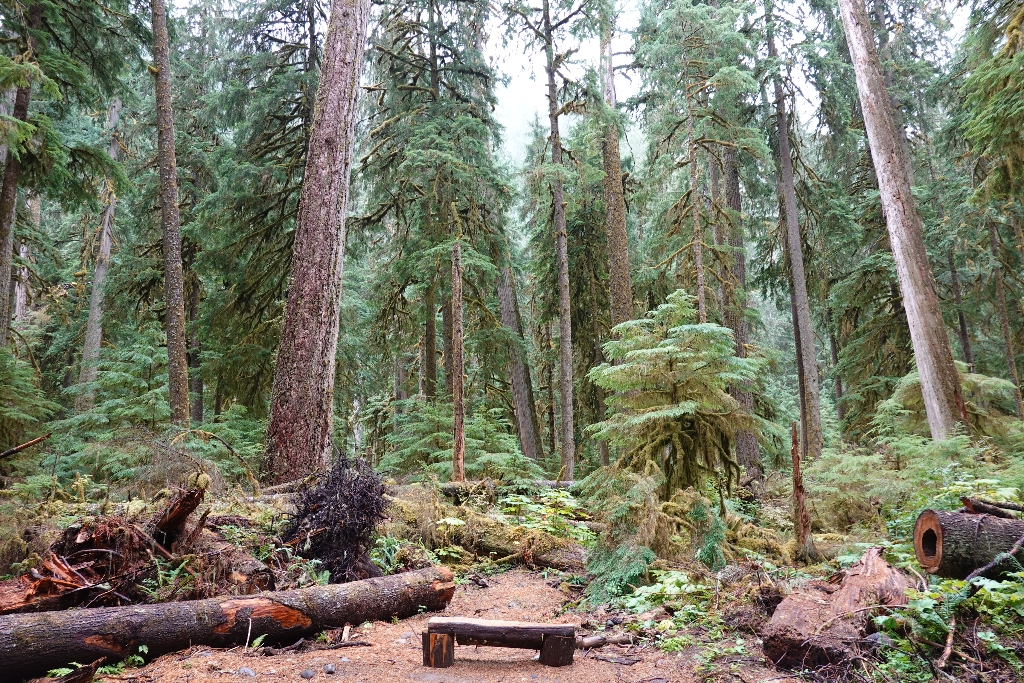
In the middle canopy, younger, smaller trees compete with each other for the little sunlight that filters through the thick green roof of the upper canopy. Here, plants must be able to tolerate shade or reach the canopy to thrive. When a fallen tree creates a gap in the canopy, nearby trees grow rapidly, racing to fill it. This stop along the Carbon River Trail is at a gap in the forest where several trees fell during past storms along the right side of the trail. Note the small tree in the center of the gap – a Western hemlock.
Western hemlocks (Tsuga heterophylla) are well-adapted to low light conditions and can thrive for years in the shade of taller trees like Western red cedar and Douglas-fir. Mature trees are commonly about 4 feet (1.2 m) in diameter but can grow as large as 8 feet (2.4 m) in diameter and 200 feet (60 m) tall if they get enough space. The Western hemlock growing in this gap has a long way to go!
Many trees, like this hemlock, are also draped with layers of mosses and lichens in every shade of green. These are epiphytes - "air plants" that grow on other plants. Epiphytes rely on host trees for support but not nutrients. They get their nourishment from air, falling rain, and the compost that lies on tree branches.
Is there something we missed for this itinerary?
Itineraries across USA


















































